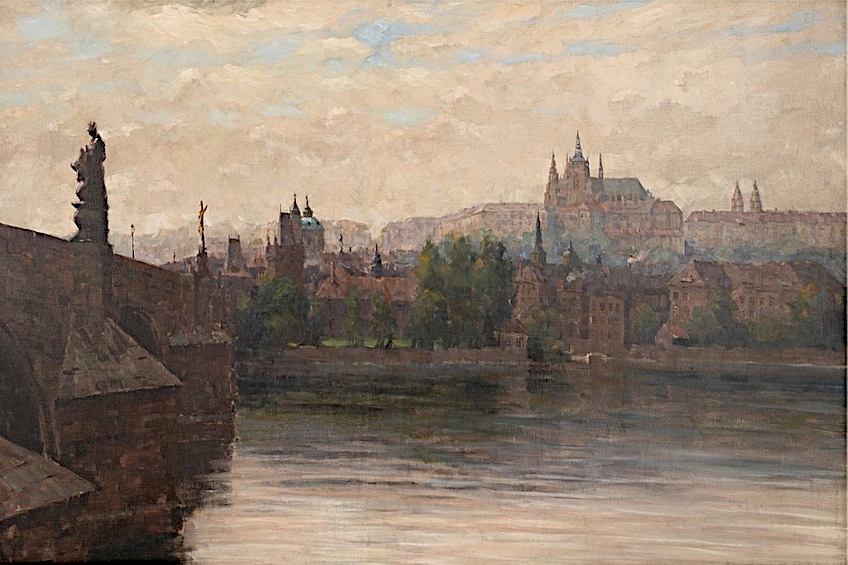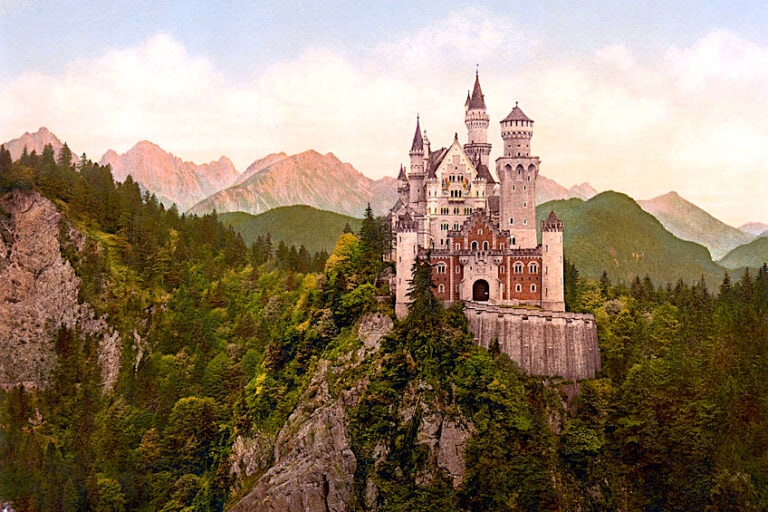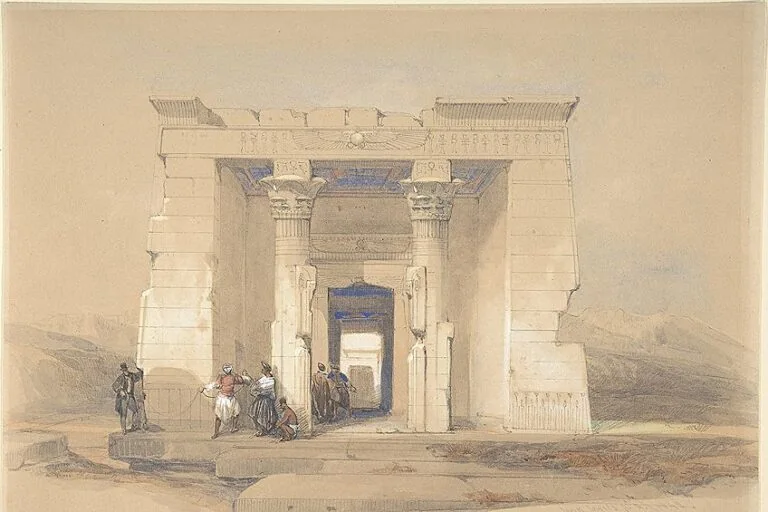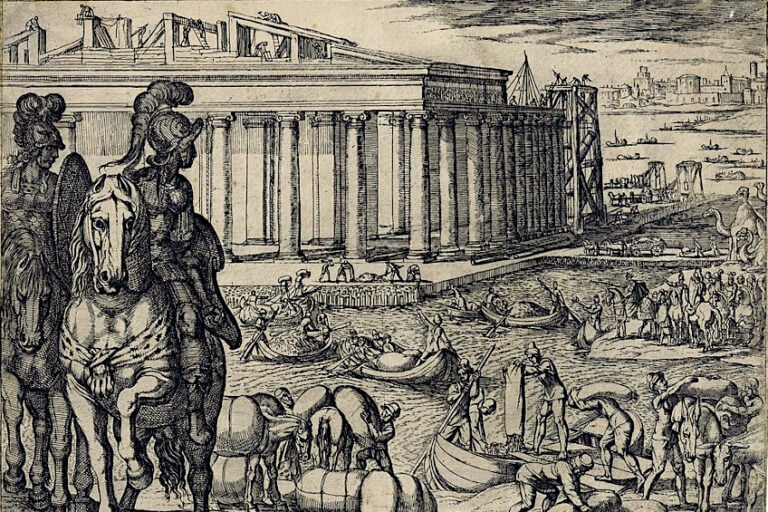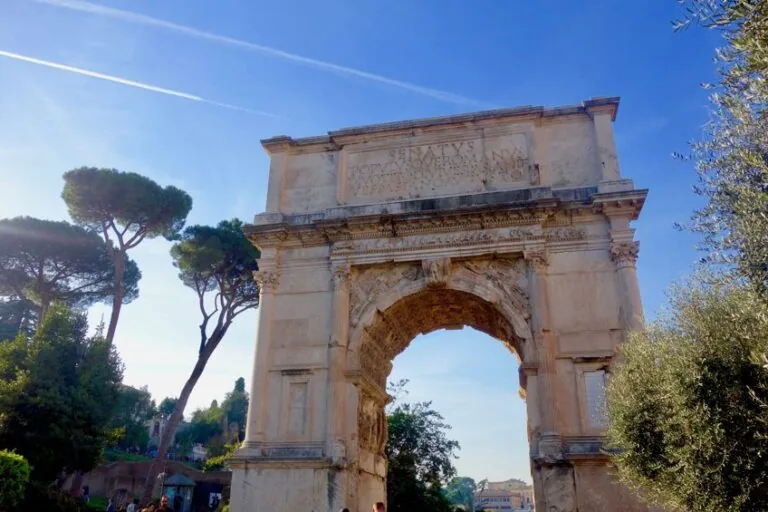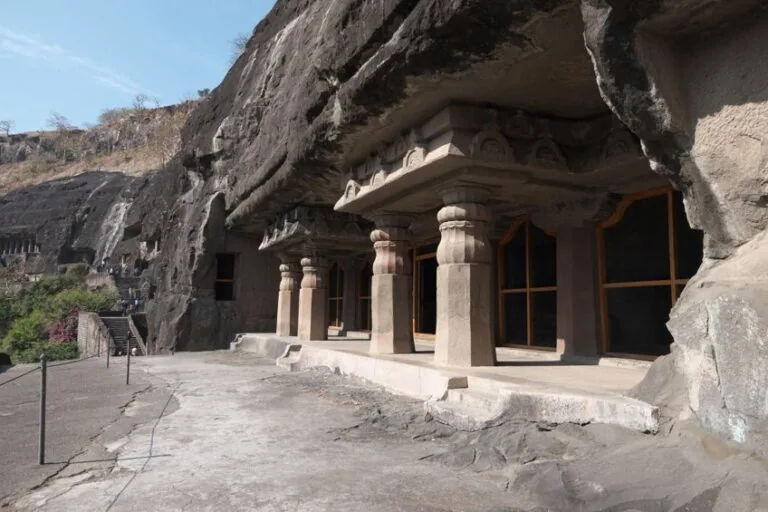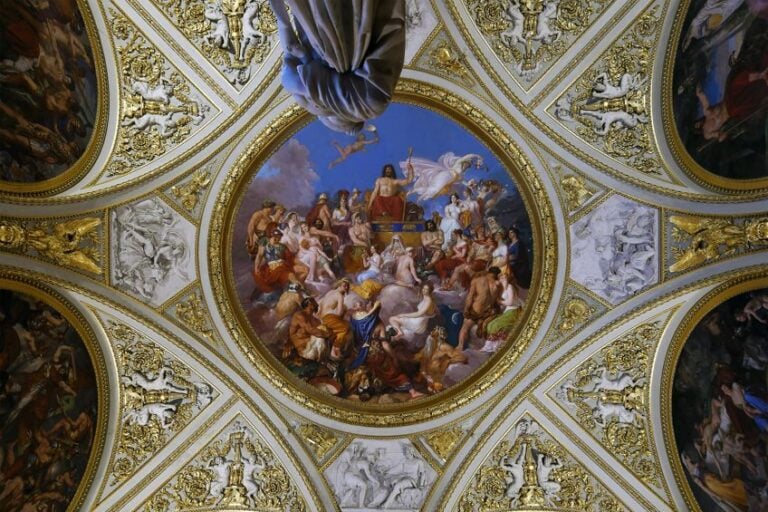Prague Castle – History of the World’s Largest Ancient Castle
Prague Castle was originally constructed in the 9th century in the Czech Republic and served as the president’s official seat. During Prague Castle’s history, it was also the seat for Holy Roman Emperors, and kings of Bohemia. At around 570 meters in length, it is recorded as the world’s largest ancient castle, and Prague Castle’s interior is nothing to scoff at either. To find out more about Prague Castle’s history, and discover what happens inside Prague Castle, continue reading below!
Contents
An Exploration of Prague Castle’s History
| Architect | Matthias of Arras (1290 – 1352) |
| Date Completed | 1929 |
| Function | Castle |
| Location | Prague, Czech Republic |
The Prague Castle’s history began when the Church of the Virgin Mary, the castle’s earliest walled structure, was erected in 870 CE. Bohemia’s first convent was housed inside Prague Castle and in the 12th century, a Romanesque palace was erected. The fortifications were later improved upon by King Ottokar II of Bohemia and he rebuilt the palace so that it was better suited as a residence.
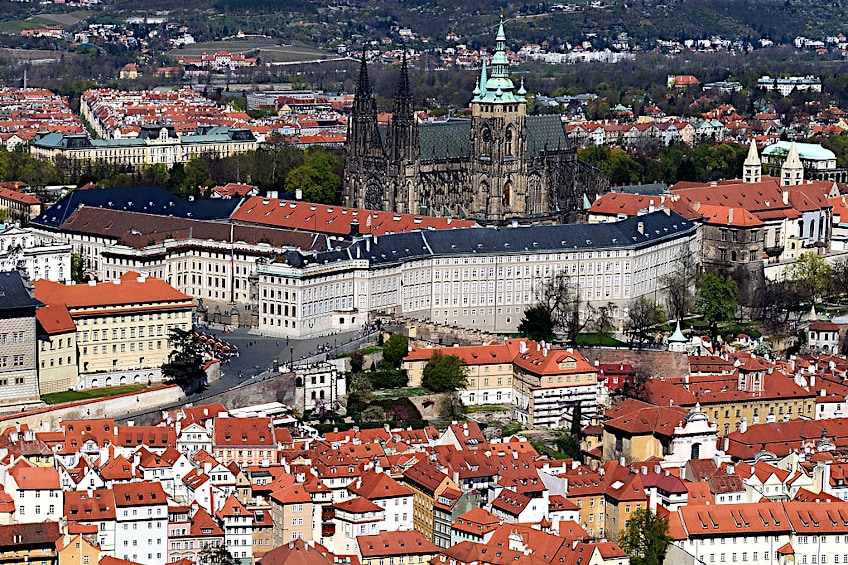 Aerial view of Prague Castle; Tim Adams, CC BY 2.0, via Wikimedia Commons
Aerial view of Prague Castle; Tim Adams, CC BY 2.0, via Wikimedia Commons
The Prague Castle During the Medieval Period
In the 14th century, during Charles IV’s reign, the royal residence was renovated in the Gothic style, and the defenses were upgraded. Construction of a massive Gothic church began, which was only eventually completed over 600 years later. The castle was abandoned during the Hussite Wars and the subsequent decades. King Vladislaus II Jagiellon started rebuilding the fortress in 1485. The Royal Palace was expanded with the addition of the huge Vladislav Hall. On the castle’s northern side, new defense towers were also erected. In 1541, a massive fire damaged most of Prague Castle.
Some new Renaissance-style structures were erected under the Habsburg reign, and the Belvedere was created as a summer home for Ferdinand I’s wife Anne. Rudolph II then made Prague Castle his primary residence. He erected the palace’s north wing, which included the Spanish Hall, where his valuable art collections were displayed.
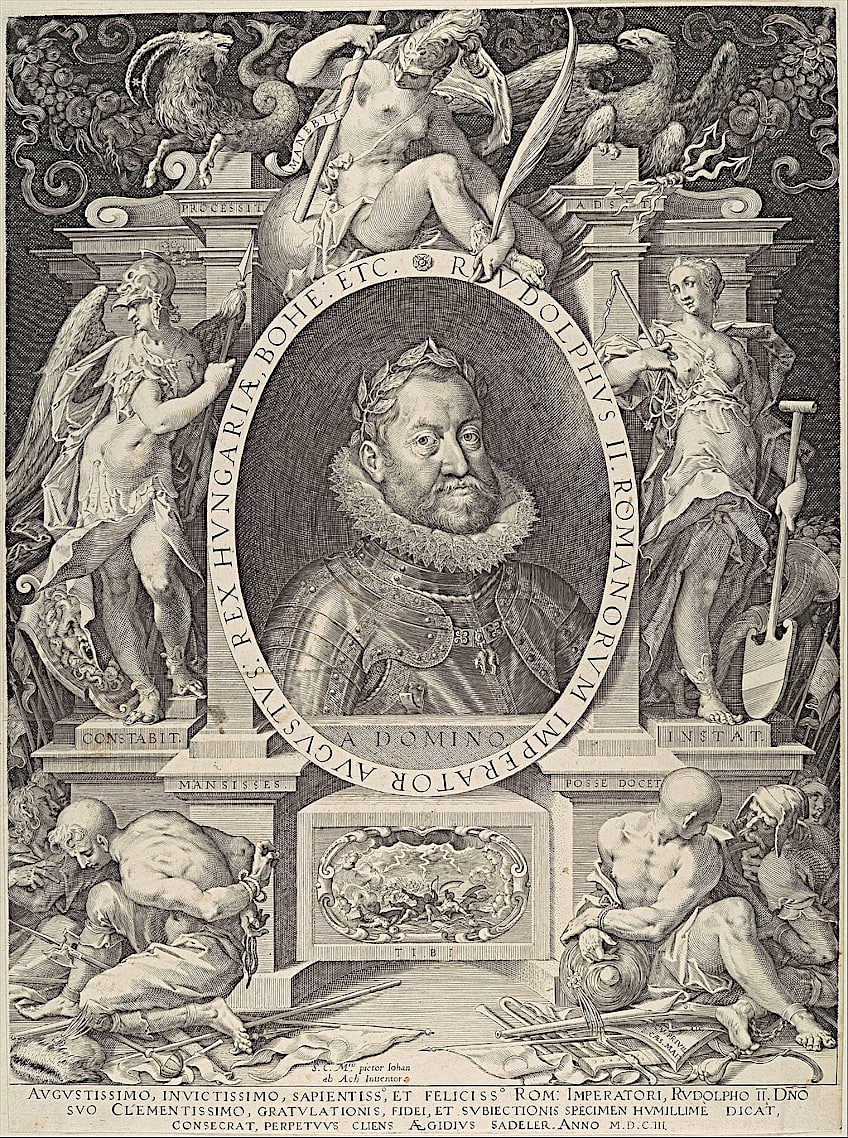 Portrait of Rudolph II by Aegidius Sadeler (1603); Aegidius Sadeler, CC0, via Wikimedia Commons
Portrait of Rudolph II by Aegidius Sadeler (1603); Aegidius Sadeler, CC0, via Wikimedia Commons
In 1618, Prague castle was the site of the Third Defenestration of Prague, which resulted in the Bohemian Revolt. Prague Castle was once again badly damaged throughout the succeeding battles. Many artworks from Rudolph II’s collection were plundered by Swedes at the Battle of Prague. Empress Maria Theresa was responsible for the last major renovation work to the castle, which took place in the second part of the 18th century.
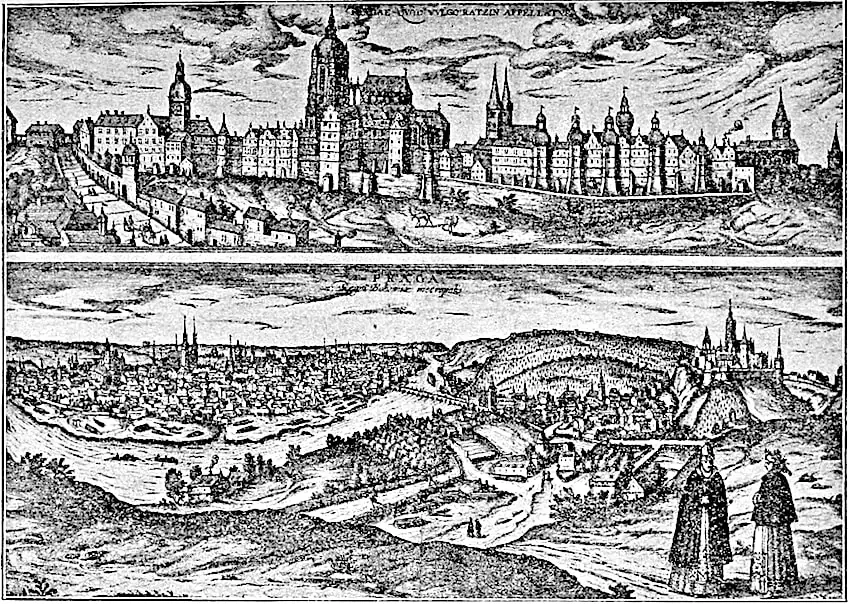 Illustration of Prague and Prague Castle based on the drawings of Georg (Joris) Hoefnage in The Story of Prague by Francis Lützow (1588); Braun & Hogenberg, Public domain, via Wikimedia Commons
Illustration of Prague and Prague Castle based on the drawings of Georg (Joris) Hoefnage in The Story of Prague by Francis Lützow (1588); Braun & Hogenberg, Public domain, via Wikimedia Commons
Prague Castle as a Presidential Residence
The castle became the residence of Tomás Masaryk, the president of the newly formed Czech Republic, in 1918. Jože Plečnik, a Slovenian architect, refurbished the New Royal Palace and its grounds. On the 28th of September, 1929, the St. Vitus Cathedral was completed. Renovations proceeded under Plenik’s successor, Pavel Janák, in 1936.
Adolf Hitler ended up spending an evening in Prague Castle on the 15th of March, 1939, shortly after Nazi Germany compelled Czech President Emil Hacha to surrender his country to the Germans.
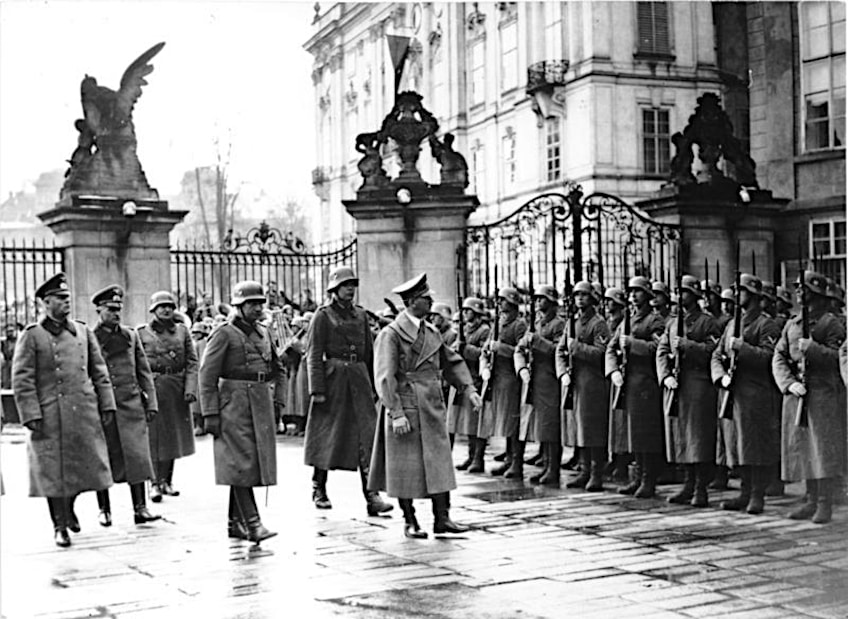 Photograph of Adolf Hitler at Prague Castle taken on 15 March 1939; Bundesarchiv, Bild 183-2004-1202-505 / CC-BY-SA 3.0, CC BY-SA 3.0 DE, via Wikimedia Commons
Photograph of Adolf Hitler at Prague Castle taken on 15 March 1939; Bundesarchiv, Bild 183-2004-1202-505 / CC-BY-SA 3.0, CC BY-SA 3.0 DE, via Wikimedia Commons
The Reich Protector of Moravia and Bohemia held his office at Prague Castle during the Nazi takeover of Czechoslovakia in World War II. Based on a widespread rumor, he apparently wore the Bohemian crown on his head. A local legend stated that any imposter who wears the crown on his head is bound to perish within a year.
On the 27th of May, 1942, little than a year after taking control, Heydrich was attacked by Czech and Slovak resistance forces on his route to Prague Castle and died a week later from his injuries.
Following Czechoslovakia’s independence in 1948, Prague Castle accommodated the communist government’s offices. After Czechoslovakia was divided into Slovakia and the Czech Republic in 1993, it became the seat of the new Czech Republic’s Head of State.
Prague Castle in the Present Day
Nowadays, Prague Castle has a wide range of uses. It is the official house of the Czech President and a renowned tourist site, receiving millions of tourists every year. Several galleries and museums are hosted inside the castle complex, including the Toy Museum, the National Gallery, and the Prague Castle Picture Gallery. The St. Vitus Cathedral is still in use as a place of devotion as well as a renowned tourist destination. It also hosts formal governmental functions and ceremonies, such as presidential inaugurations, as well as a range of cultural events and concerts.
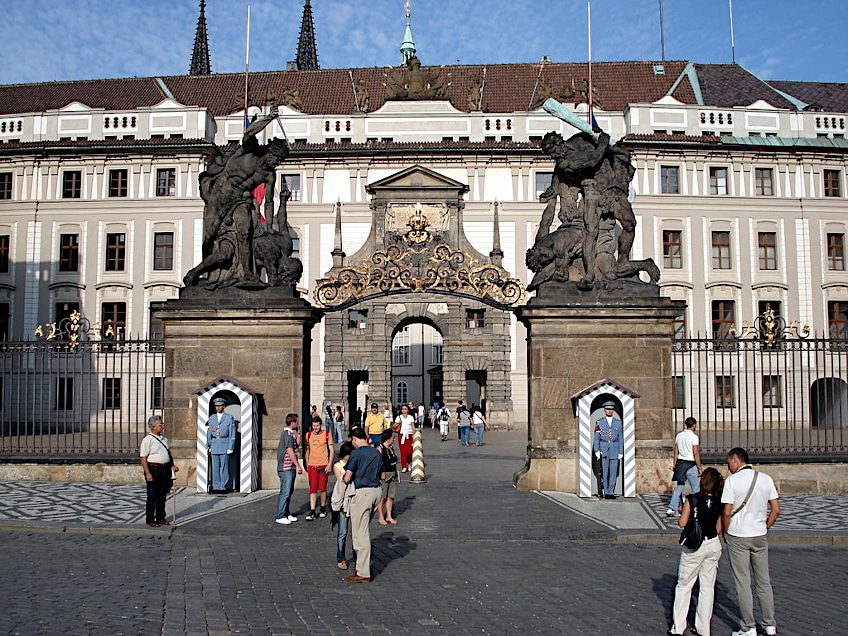 Main entrance of Prague Castle on Hradčany; Diligent, Public domain, via Wikimedia Commons
Main entrance of Prague Castle on Hradčany; Diligent, Public domain, via Wikimedia Commons
Prague castle is open to the public, and guided tours are available to learn about Prague castle’s history as well as the many buildings and chambers inside the castle complex. It also houses the famed St. Vitus Cathedral Choir School, which prepares choir boys for the Cathedral. The Castle is also a UNESCO World History Site, having been designated for its exceptional universal significance and distinctive architectural heritage, which is the result of centuries of modifications.
The Architecture of Prague Castle
Although construction originally began in 870 CE, work continued until 1929, when the St. Vitus Cathedral was completed by Slovenian architect Jože Plečnik. He was also in charge of modernizing several of the palace’s buildings. Prague Castle structures reflect nearly every architectural style of the previous millennium, thanks to such a long construction period. This provides tourists and architectural lovers with a comprehensive example of the various design movements that have occurred since the 9th century.
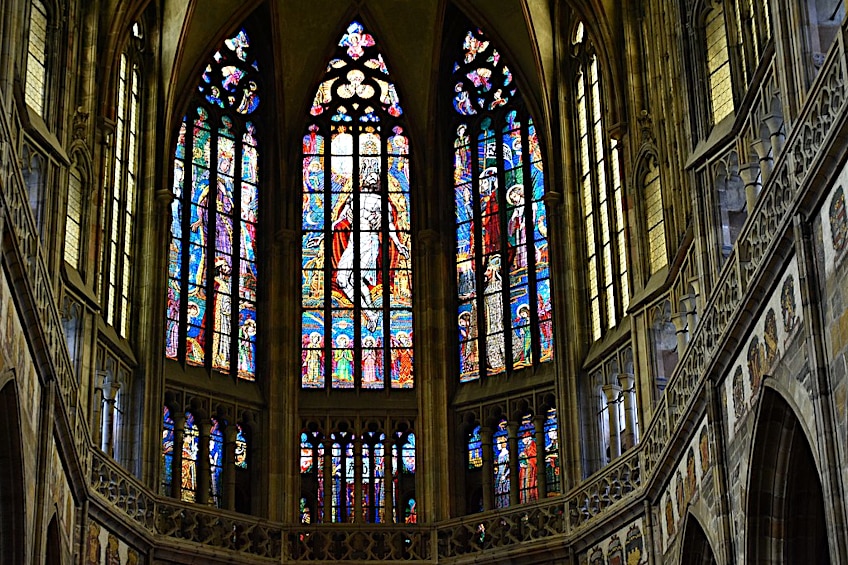 Interior of St. Vitus’s Cathedral in Prague Castle; Richard Mortel from Riyadh, Saudi Arabia, CC BY 2.0, via Wikimedia Commons
Interior of St. Vitus’s Cathedral in Prague Castle; Richard Mortel from Riyadh, Saudi Arabia, CC BY 2.0, via Wikimedia Commons
The Old Royal Palace, for example, was erected in the 12th century but was restored multiple times over the years. Nowadays, the resulting edifice is an intriguing blend of architectural styles such as Renaissance and Gothic. It’s a majestic mixture worthy of the complex’s most prominent secular landmark and the city itself. The castle also features the majestic Vladislav Hall, which was created in the late Gothic style.
Lobkowicz Palace is a beautiful Baroque structure. Built around 1550, the palace was restored in the late 1600s in the Italianate style under the direction of Václav Eusebius. This influence may be found in the trompe l’oeil sculptures of emperors, geometric decorations, and other ornamental elements throughout the building. The churches of Prague Castle are a spectacular architectural combination of styles and are perhaps some of the most stunning monuments in the entire Prague Castle complex. The massive St. Vitus Cathedral was erected over 600 years and is an excellent representation of Gothic architecture.
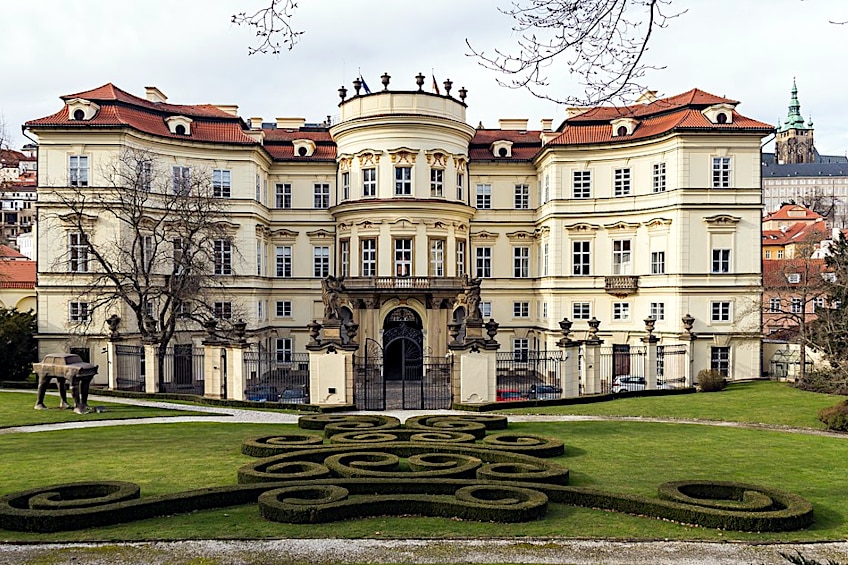 View of the Lobkowitz Palace in Prague Castle as seen from the rear gardens; © Raimond Spekking
View of the Lobkowitz Palace in Prague Castle as seen from the rear gardens; © Raimond Spekking
St. George’s Basilica, the oldest religious building, was completed in Romanesque style in 920 CE. The All Saints’ Church, erected some 300 years later, is the epitome of Gothic Revival architecture. Even the castle’s minor components are architectural wonders in their own right, with a pleasant discovery at every turn.
The Matthias Gate, which serves as the entryway to the castle’s second courtyard, was designed by Giovanni Maria Filippi, an Italian architect, and is another excellent example of Baroque architecture. Plenik’s Bull Staircase in the third courtyard is a more contemporary addition. The staircase, which is adorned with miniature bronze bulls, is part of the architect’s 20th-century renovation efforts.
Prague Castle’s Interior
The inside of Prague Castle is very elaborate, with several structures and chambers. The Prague castle’s interior complex includes the Gothic St. Vitus Cathedral, the biggest and most significant church in the Czech Republic, the Basilica of St. George, the Old Royal Palace, the Golden Lane, and a street dotted with tiny apartments that were once the residences of local craftsmen and castle guards.
The Prague Castle’s interior is likewise rich in artwork, including tapestries, frescoes, and sculptures.
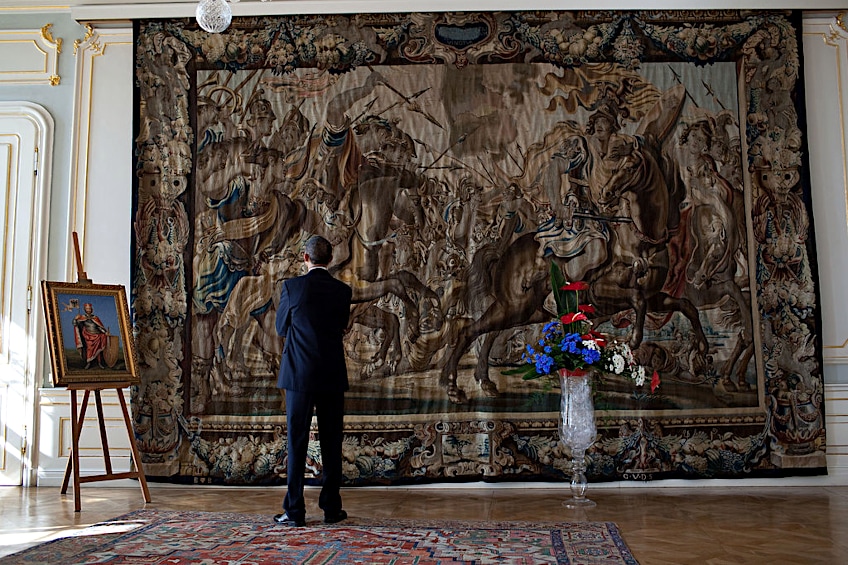 Photograph of President Barack Obama admiring a tapestry at Prague Castle taken April 8, 2010; Pete Souza, Public domain, via Wikimedia Commons
Photograph of President Barack Obama admiring a tapestry at Prague Castle taken April 8, 2010; Pete Souza, Public domain, via Wikimedia Commons
The Gothic St. Vitus Cathedral features a vast and beautiful interior with ribbed vaults, pointed arches, and intricate stone sculptures. The Old Royal Palace, built in the 12th century, features a more subdued Gothic interior with ribbed ceilings and simple stone embellishments.
The interior of the Basilica of St. George is simple yet beautiful, with barrel vaults and paintings. The inside of the Golden Lane, a lane lined with modest buildings that were originally home to castle soldiers and craftsmen, is more natural and cozy, with exposed timber and brick walls.
Interesting Facts About Prague Castle
This old castle has many stories to tell. During its existence, it has seen kingdoms and rulers rise and fall. It has witnessed changes in technology, religion, and culture. Let us explore Prague Castle’s most interesting facts.
- The word “defenestration” was first coined following an incident at Prague Castle. Defenestration, which denotes throwing an individual out of a window, arose from an occurrence that happened at Prague Castle in 1618. A year before, Roman Catholic officials had closed down two new Protestant chapels. Angry Protestant rights activists requested and won a trial in the Castle’s council chamber. What occurred next made history: two of the Catholic regents and their clerk were thrown out the window after being found guilty of breaching the right to religious freedom. Fortunately, a mound of horse manure cushioned their descent, and they survived uninjured.
- There are valuable jewels safeguarded within the castle. The Bohemian Crown Jewels, which are kept in a room inside St. Vitus Cathedral, contain the royal scepter, St. Wenceslas crown, and a coronation cloak. The Republic is also not taking any chances with its security, since both the room door and the iron safe within have seven locks. The keys are in the hands of seven individuals, including the prime minister, president, and archbishop of Prague. Only the president can decide how the Bohemian Crown Jewels are presented publicly in Prague. They are normally displayed once approximately every five years. When this occurs, every one of the seven key holders must be there for the unlocking to take place.
- The infamous Butcher of Prague stayed at the castle. Reinhard Heydrich, a key Holocaust organizer, held court in Prague Castle commencing from 1941. When Hitler appointed him to oversee the Czech citizens of the region, he immediately launched a campaign of abductions and murders. Czechs dubbed him “The Butcher of Prague” out of fear. However, a team of exiled Czech officials intervened and created Operation Anthropoid to execute Heydrich. Two Czech troops climbed on bicycles and cycled toward Prague Castle in May 1942, three months after parachuting into the region and moving towards Prague. They made their strike when they saw The Butcher in his Mercedes, by throwing explosives at him. He died a week later from the wounds that he had sustained from the attack.
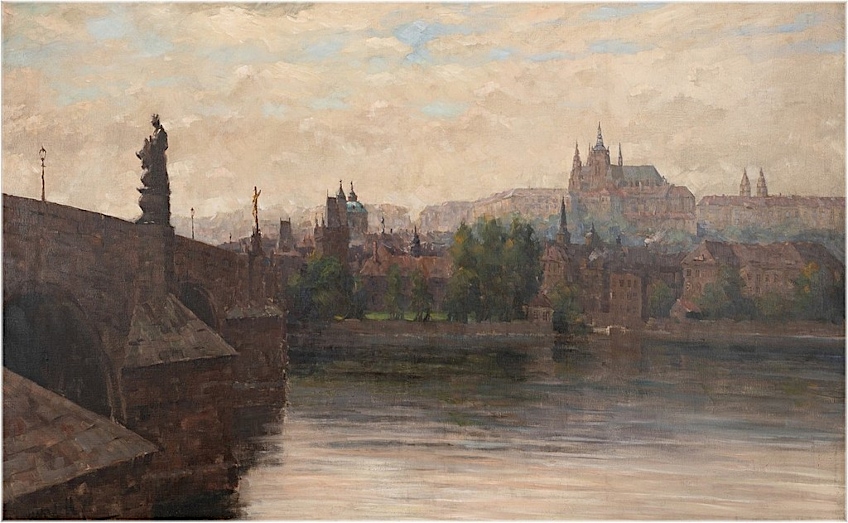 View of the Hradčany district in Prague by Stanislav Feikl (1910); Stanislav Feikl, Public domain, via Wikimedia Commons
View of the Hradčany district in Prague by Stanislav Feikl (1910); Stanislav Feikl, Public domain, via Wikimedia Commons
- People dance to a saint’s dismembered arm. Vitus Cathedral has the most comprehensive church treasury in the Czech Republic and one of Europe’s greatest collections. Some artifacts date back to the early Medieval Era, but there is one that particularly sticks out. It is Saint Vitus’ arm, a Sicilian who perished as a martyr in 303 CE when Christians were persecuted by the Roman Emperors Maximian and Diocletian. Many years later, in the late Medieval Era, people in Latvia and Germany celebrated Vitus’ feast by dancing around his relic. He is now considered the patron saint of entertainers, dancers, and epileptics. He is also said to protect against lightning strikes.
- Prague Castle has a beautiful tropical greenhouse garden. The Holy Roman Emperor Rudolf II maintained a tropical plant garden, such as citrus trees, inside Prague Castle grounds in the 16th century. The tradition lives on in the Orangery, a glass-enclosed, tubular-shaped greenhouse installed in the Royal Gardens in 1999. The three-part structure was designed by Olga Havlová, the first wife of then-President Václav Havel, and features room for blooming, growing, and keeping various tropical plants and Mediterranean fruits. During the summer, it is open to the general public.
- Many famous people have stayed there, including Kafka. Golden Lane, a little lane directly behind Prague Castle, is lined with adorable rows of tiny residences. Tourists now lounge around and buy trinkets and books on some of the ground floors, but alchemists under Emperor Rudolf II resided here in the late 16th century and apparently attempted to transform metal into gold. From 1916 until 1917, the author Franz Kafka shared home No. 22 with his sister. It appears to have been a wise decision since Kafka penned short tales for A Country Doctor and was inspired to create The Castle during his stay there.
Prague Castle is the combined name for a 45-hectare collection of churches, palaces, courtyards, fortifications, and gardens located in Prague. It was formerly the seat of the monarchs of Bohemia, and is now the official home of the Czech Republic’s president. It is located in Prague’s historic center, which is a UNESCO World Heritage site. Prague Castle’s history stretches back over many centuries and has therefore been the residence of generations of various rulers and kings. Today, it serves a multitude of purposes, and the public is allowed to access the complex to appreciate the architecture and history. There are not many places in the world where so many architectural styles are represented in one complex.
Frequently Asked Questions
What Was the Original Function of Prague Castle?
Prague Castle was constructed in the 9th century as a stronghold to defend the Czech population from foreign tribal invasions. It was erected on a hill above the Vltava River, making it an ideal position for a castle because it could be easily protected. In 880 CE, the first documented monarch of the castle erected a wooden fortification on the site. The castle witnessed several expansions and reconstructions throughout the years, and accommodated multiple emperors of the Holy Roman Empire, including dukes, kings, and emperors. The castle served as a royal home, a military stronghold, and a place of worship.
What Was Prague Castle Used for in the Middle Ages?
Prague Castle was utilized as a political and administrative center, as well as the home of the Bohemian monarchs who ruled throughout the 10th and 11th centuries. The Pemyslid dynasty renovated and expanded the castle in the 12th century, converting it into a larger and more opulent residence. Under Charles IV’s administration, Prague Castle was further extended and made into an opulent castle throughout the 14th century. This era was regarded as the height of the castle’s influence; it represented the strength of the Bohemian rulers and functioned as the administrative hub of the Holy Roman Empire.
What Was Prague Castle Used for in the Renaissance Era?
Prague Castle functioned as a royal residence, and, once the Basilica of St. George was erected, a place of worship in the 15th century. It was renovated and further extended in the 16th century in the Renaissance style, and it was still employed as a royal palace and a hub of social and political influence. The Vladislav Hall, completed in the early 16th century, was one of the most notable additions to the complex during the Renaissance era. This huge, elaborate hall was used for a variety of state occasions, including coronations and royal feasts. It is regarded as one of the most prominent examples of Renaissance architecture in the entire Czech Republic.
How Long Did It Take To Build Prague Castle?
The first construction work at the Prague Castle site commenced all the way back in 870 CE. From a basic wooden fort, it was then built upon and modified many times over the following centuries. Continuous upgrades and extensions continued all the way up to 1929.

I am deeply passionate about history and am constantly fascinated by the rich and complex stories of the past. As the editor-in-chief of learning-history.com, I have the opportunity to share this passion with a wide audience through the creation and distribution of engaging and informative content about historical events, persons, and cultures. Whether it’s through writing articles and blog posts or creating videos or podcasts, I strive to bring the past to life in a way that is both accurate and enjoyable. My expertise in history, combined with my strong writing and communication skills, allows me to effectively communicate complex historical concepts and make them accessible and interesting to a wide range of readers. I am truly grateful for the opportunity to share my love of history with others through my work on learning-history.com.

